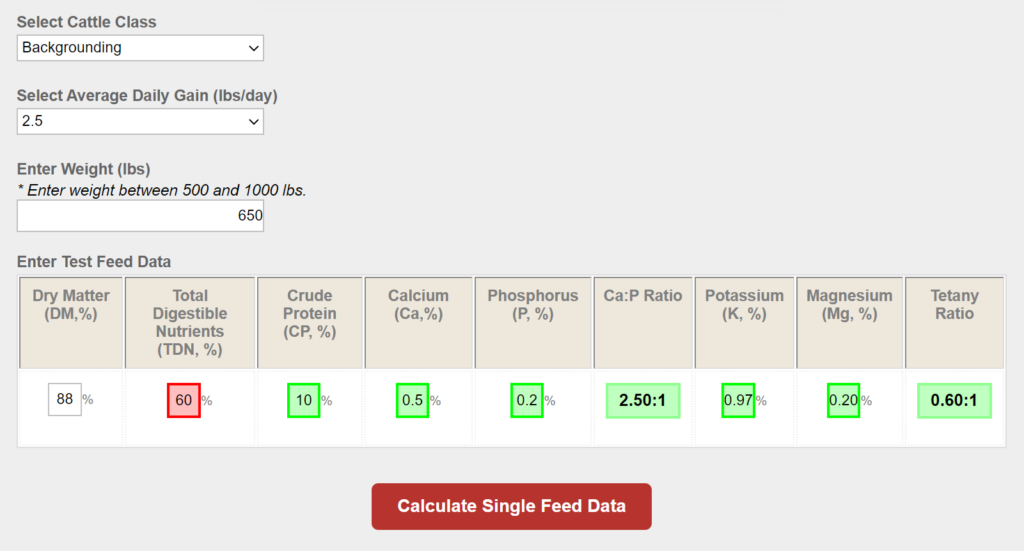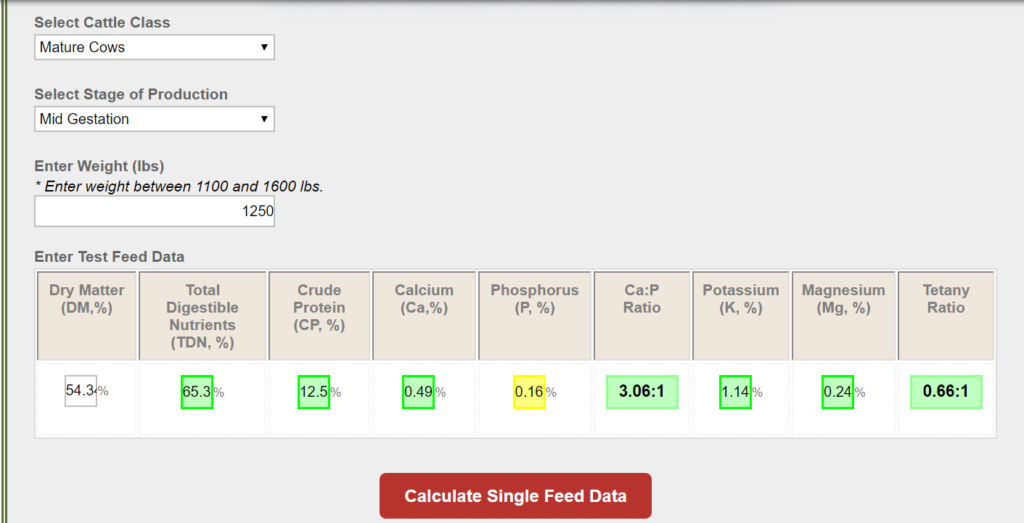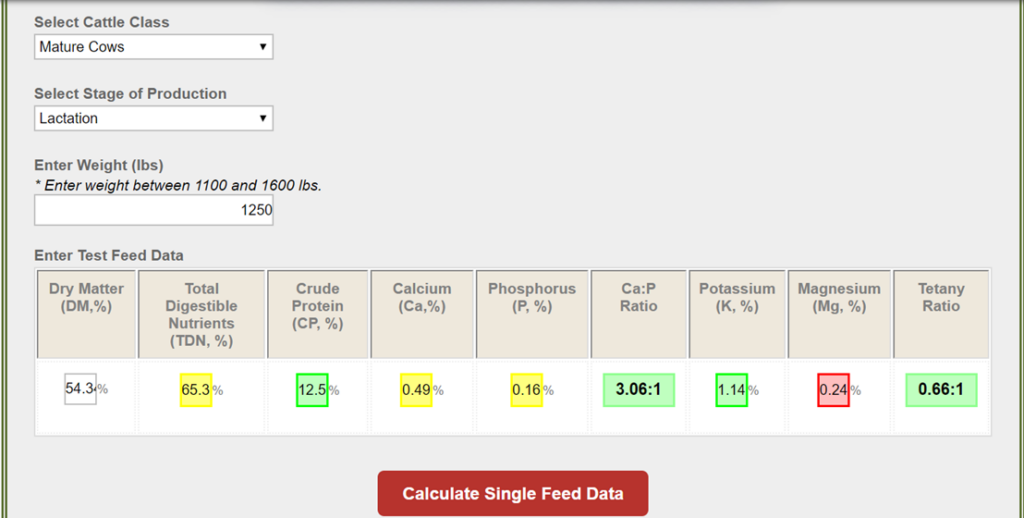It’s Time to Start Thinking About Feed Testing
With cattle feed being swathed, harvested, or already in the silage bunk or bale now is the time to start thinking about testing feed. Although it is best to feed test as close as possible to the day the animal will be consuming it, testing now, as well as again closer to the time of feeding, can help you determine if supplemental feed will be needed and provide time to source it.
A common question from producers is, now that I have my feed test results, what do I do with it? What do all those numbers mean? And how do I make use of this information on my operation? Recognizing this need for some general information to help producers better utilize their feed tests, the Tool for Evaluating Feed Test Results was developed by the Alberta Beef, Forage and Grazing Centre. This tool allows you to input the results of your feed test along with the class of animal you intend to feed and it will give you a green light (OK to feed), yellow light (be cautious if feeding as a stand-alone feed source), or red light (don’t feed this as a stand-alone feed source).
Note that this tool is not intended for use in ration balancing, but rather to alert you to potential issues with individual feed ingredients. It is strongly recommended that producers seek advice from a qualified professional to develop a balanced ration or familiarize yourself with ration balancing software like CowBytes.
Feed testing helps with understanding the nutritional quality of your feed and provides the details for ration formulation. There are ways this information can add value to your operation as you make day to day management decisions. Having a feed test can help you decide which class of cattle should receive certain feeds and which stages of production will require different quality feed sources, by identifying any excess or deficiencies in energy, protein and a selection of the trace minerals.
Who to feed?
Different classes of cattle have different nutrient requirements. This means that a feed source that would not work as a stand-alone feed for one group of cattle might meet or exceed another class of cattle’s nutritional requirement. Understanding the nutrient content of your feed will help you match the feed source to the class of cattle being fed. For example, the hay in the sample below can be fed as a stand-alone feed to mature cows in mid gestation, but, unsurprisingly, it does not have enough energy (total digestible nutrients, TDN) for backgrounding cattle that are targeting a 2.5 lb per day gain.
When to feed?
Cows’ energy demands change throughout their annual production cycle, so testing feed provides information needed to determine the best time to utilize a certain quality of feed. For example, the following feed source would work as a stand-alone feed source for mature cows in mid gestation but would not meet requirements for magnesium and is borderline low for energy (TDN), calcium and phosphorus for lactating cattle. So, it would be best to use this feed source in mid gestation and find a feed with a higher TDN value and consider some additional mineral supplementation to support the nutritional requirements of your cows during lactation.
Identifying feed quality issues
Having feed test results can help to identify if a feed source presents serious nutritional problems. Either excesses or deficiencies in minerals can cause reproductive problems in cattle. Depending on the feed source being tested, you may also want to include testing for nitrates or mycotoxins to determine if the feed is safe for cattle to consume. Deficiencies in most nutrients can be remedied by providing additional supplementation. For example, the hay in the example below is deficient in TDN and protein for any class of cattle as a stand-alone feed, so additional energy and protein supplementation would be required when using this feed source.
Testing feed doesn’t take long and is cost effective, when considering the impact it can have in the prevention of reproductive wrecks, health issues, or even death. For more information on feed testing, including how to take samples, where to send them, and the Tool for Evaluating Feed Test Results, check out our Feed Testing & Analysis for Beef Cattle page.
Click here to subscribe to the BCRC Blog and receive email notifications when new content is posted.
The sharing or reprinting of BCRC Blog articles is welcome and encouraged. Please provide acknowledgement to the Beef Cattle Research Council, list the website address, www.BeefResearch.ca, and let us know you chose to share the article by emailing us at info@beefresearch.ca.
We welcome your questions, comments and suggestions. Contact us directly or generate public discussion by posting your thoughts below.




